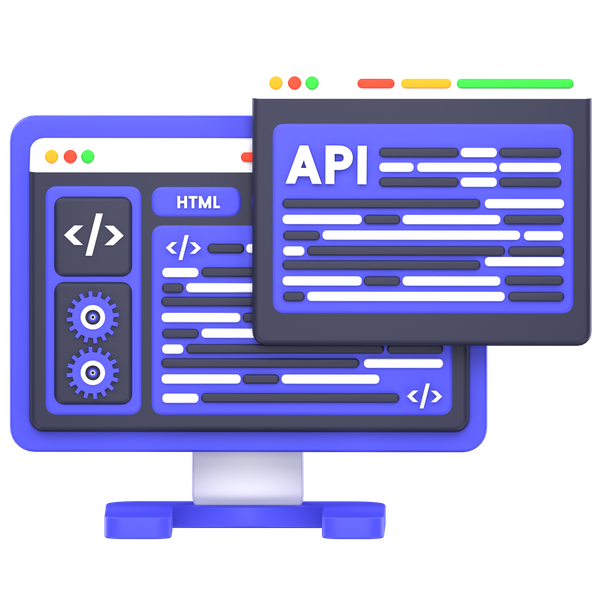REST APIs are tools for creating scalable, maintainable, and loosely coupled systems. They are the backbone of modern applications, facilitating seamless communication between systems, devices, and platforms.They focus on efficient data transfer between client and server and are essential for creating robust, reusable, and interoperable systems across an organization’s IT landscape, aligning with business goals and technology strategy.
As someone with expertise spanning software engineering and enterprise architecture,I have observed how REST APIs empower both technical implementation and strategic enterprise goals. REST APIs enable the exchange of data using standard web protocols like HTTP. It revolves around resources (such as users, accounts, or products) that are manipulated via HTTP methods (“verbs”) like GET, POST, PUT, and DELETE.
REST APIs provide developers with a powerful, lightweight way to connect frontend interfaces and backend systems.
In my software engineering work with platforms like WrenchBoard, MyFit.ai, MermsEmr and Intralot, REST APIs have been instrumental in building scalable, maintainable systems. These APIs enable:
- Efficient Data Transfer: Using lightweight formats like JSON or XML.
- Loose Coupling: Decoupling the frontend (e.g., React, Angular) from backend services for independent updates.
- Real-Time Interactions: Implementing WebSocket for live updates, such as lottery result tracking in Intralot.
Best Practices in API Development
- Resource-Oriented Design:
- REST APIs focus on resources (e.g.,
/users/{id}or/transactions/{id}) to make endpoints intuitive and easy to consume.
- REST APIs focus on resources (e.g.,
- HTTP Status Codes:
- Proper status codes (e.g.,
200 OK,201 Created,404 Not Found) ensure clear communication between clients and servers.
- Proper status codes (e.g.,
- Authentication and Security:
- Implemented robust mechanisms like OAuth2 and JWT to secure user data and access in MyFit.ai.
- Versioning:
- Introduced versioning (e.g.,
/v1/interest) to ensure backward compatibility as APIs evolve.
- Introduced versioning (e.g.,
- Document APIs using tools like Swagger or Postman for easier integration.
REST APIs go beyond mere functionality; they align IT capabilities with organizational goals. As an enterprise architect, I see REST APIs as the foundation for digital transformation. They enable:
- System Interoperability: Connecting legacy systems with modern applications.
- Reusability: Creating reusable components that reduce redundancy and development costs.
- Scalability and Resilience: Statelessness and layered architecture ensure REST APIs can handle high traffic without compromising performance.
Architectural Considerations
- API Gateway for Centralized Management:
- Using tools like Kong and Apigee, I’ve implemented API gateways to enforce security policies, rate limiting, and analytics across services.
- Data Consistency and Integrity:
- Ensuring idempotency for
PUTandDELETEoperations, especially for critical systems like payment processing.
- Ensuring idempotency for
- Monitoring and Governance:
- Leveraged tools like Datadog to monitor API performance and usage, ensuring SLAs (Service Level Agreements) are met.
Integration with Cloud and Microservices
REST APIs form the backbone of event-driven architectures and microservices. For instance, at MyFit.ai, APIs were integral to integrating AI-based health tracking with cloud-based data storage systems like AWS and Redis, ensuring fast and reliable data access.
REST API Challenges
Rate Limiting:
- Overloaded APIs degrade performance.
- Solution: Implement rate limits and prioritize essential requests.
Versioning and Lifecycle Management:
- Managing multiple API versions without breaking clients is critical.
- Solution: Deprecate older versions gracefully with clear communication.
Cross-System Dependency:
- Large enterprises often rely on APIs from various vendors.
- Solution: Use API orchestration layers to streamline dependencies.
Monitoring and Analytics:
- Tracking API performance, usage, and errors is vital for business insights.
- Solution: Use monitoring tools like New Relic, Prometheus, or Datadog.
REST API Example: Users API
Endpoints
- Create a New User (
POST /users):- Request Body:
{ "name": "John Doe", "email": "johndoe@example.com", "password": "securepassword" }Response:
{
"id": 1,
"name": "John Doe",
"email": "johndoe@example.com"
}2. Retrieve User Details (GET /users/{id}):
- Response:
{
"id": 1,
"name": "John Doe",
"email": "johndoe@example.com"
}3. Update User Information (PUT /users/{id}):
- Request Body:
{
"name": "Johnathan Doe",
"email": "johnathan.doe@example.com"
}- Response:
{
"id": 1,
"name": "Johnathan Doe",
"email": "johnathan.doe@example.com"
}4. Delete a User (DELETE /users/{id}):
- Response:
{
"message": "User deleted successfully"
}Security
- Authentication: Using OAuth2 or JWT to ensure secure access to endpoints.
- Validation: Enforcing data validation rules at the API gateway and backend levels.
Conclusion
REST APIs are more than just tools for developers; they are strategic assets for enterprises. As a software engineer, I focus on crafting efficient, secure, and scalable APIs that meet immediate project needs. As an enterprise architect, I ensure those APIs align with broader business strategies, fostering interoperability, innovation, and growth.
By combining both perspectives, REST APIs become enablers of technical excellence and business success, empowering organizations to thrive in the digital age.



